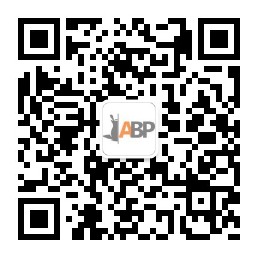spring泛型注入
泛型依赖注入
Spring 4.0版本中更新了很多新功能,其中比较重要的一个就是对带泛型的Bean进行依赖注入的支持。
泛型依赖注入允许我们在使用spring进行依赖注入的同时,利用泛型的优点对代码进行精简,同时在不增加代码的情况下增加代码的复用性。
Spring默认按照字段的类进行依赖注入,而Spring4的新特性就是把泛型的具体类型也作为类的一种分类方法(Qualifier)。
背景
假设有两个实体类Student和Teacher
@Data
public class Student implements IEntity{
private long id;
}
@Data
public class Teacher implements IEntity{
private long id;
}
实体的存储,是通过仓储操作的,一般所有的实体仓储方法都是一致的,只有具体的实体类型不一样,定义仓储接口
public interface IRepository<TEntity extends IEntity>{
void add(TEntity entity);
List<TEntity> findAll();
...
}
定义仓储实现的基类,在本例中,使用List存储
public abstract class BaseRepository <TEntity extends IEntity> implements IRepository<TEntity>{
List<TEntity> datasource = new ArrayList<>();
@Override
public void add(TEntity entity){
this.datasource.add(entity);
}
@Override
public List<TEntity> findAll(){
return datasource;
}
}
泛型依赖注入的Bean
BaseRepository 是一个抽象类,不适宜注入到spring中,定义一个可以注入的bean
@Repository()
@Scope("prototype")
public class DefaultRepository<TEntity extends IEntity> extends BaseRepository<TEntity>{
}
注意@Scope("prototype")注解,表示DefaultRepository的bean的作用是瞬态的,每次获取bean时都会创建一个新的bean,如果不添加作用域,默认spring的bean是单例的,这样注入的仓储实例会是同一个实例。
在test中依赖注入@Autowired IRepository<Student> studentRepository; 和 @Autowired IRepository<Teacher> teacherRepository;,
验证这两个仓储的类型都是DefaultRepository类型,同时验证操作student不会影响到teacher。
@ExtendWith(SpringExtension.class)
@ContextConfiguration(
classes = {DemoTests.DemoTestsConfiguration.class})
public class DemoTests {
@Autowired
IRepository<Student> studentRepository;
@Autowired
IRepository<Teacher> teacherRepository;
@Test
public void test(){
assertThat(studentIRepository.getClass())
.isEqualTo(DefaultRepository.class);
assertThat(teacherIRepository.getClass())
.isEqualTo(DefaultRepository.class);
studentIRepository.add(new Student());
assertThat(studentIRepository.findAll())
.hasSize(1);
assertThat(teacherIRepository.findAll())
.hasSize(0);
}
@ComponentScan({
"org.example"
})
@Configuration
public static class DemoTestsConfiguration {
}
}
仓储扩展
在上一部分,所有的仓储操作,都定义在了BaseRepository中,如果遇到了仓储中未提供的方法,则需要对单个实体的仓储进行扩展。
自定义仓储接口,继承自IRepository<Student>
public interface IStudentRepository extends IRepository<Student>{
Student findById(long id);
}
实现自定义仓储接口
@Repository
public class StudentRepository extends BaseRepository<Student> implements IStudentRepository {
@Override
public Student findById(long id) {
return null;
}
}
使用例子如下
@ExtendWith(SpringExtension.class)
@ContextConfiguration(
classes = {DemoTests.DemoTestsConfiguration.class})
public class DemoTests {
@Autowired
IRepository<Teacher> teacherRepository;
@Autowired
IStudentRepository studentRepository;
@Test
public void repositoryType(){
assertThat(studentRepository.getClass())
.isEqualTo(StudentRepository.class);
assertThat(teacherRepository.getClass())
.isEqualTo(DefaultRepository.class);
}
@ComponentScan({
"org.example"
})
@Configuration
public static class DemoTestsConfiguration {
}
}
总结
- 使用泛型依赖注入,可以减少重复代码和类的数目,在本例中,无需对
Student和Teacher两个实体定义仓储接口和实现,使用统一的仓储接口和默认实现即可完成大部分的操作。 - 在项目中,我们使用
mybatis-plus做为仓储层操作数据库,对实体的操作,都需要定义一个Mapper接口和一个Service接口,如果使用泛型注入,是否可以减少Service的代码量呢? - 本文中使用的
@Repository() @Scope("prototype")两个注解注册仓储实例的Bean,@Scope("prototype")注解会导致每个实体的仓储都是瞬态的,如何保持每个实体对应的仓储Bean是同一个实例呢? 下一篇会介绍另外一种注册Bean的方式: spring bean的动态注入
关注我的公众号,一起探索新技术的海洋

微信公众号: abplearn
QQ: 1260825783



